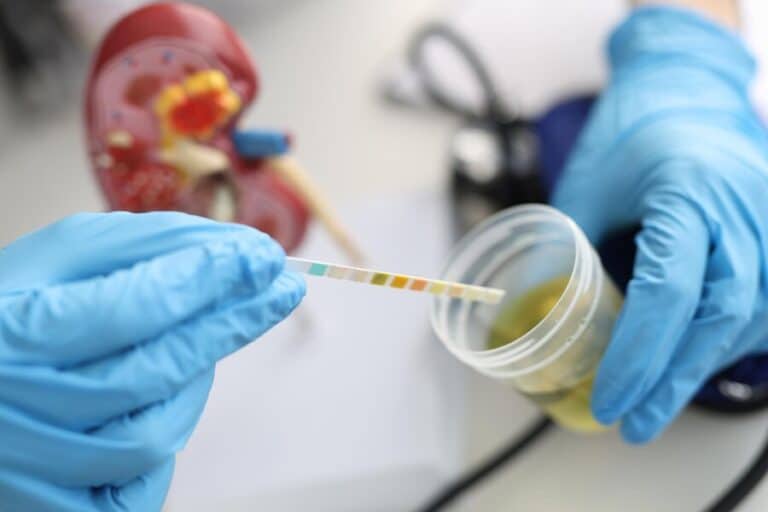The quest for early cancer detection has taken a significant leap forward with the discovery of new urinary biomarkers. These innovative biological indicators hold the promise of transforming how we diagnose and monitor various cancers, particularly bladder cancer, through non-invasive methods. As research continues to unveil the potential of these biomarkers, they offer hope for improved accuracy, earlier diagnosis, and better patient outcomes.
Understanding Urinary Biomarkers

Urinary biomarkers are substances found in urine that can indicate the presence of disease, including cancer. They can be proteins, nucleic acids, or metabolites that reflect the biochemical changes associated with tumor development. The appeal of urinary biomarkers lies in their non-invasive nature, allowing for easier and more frequent testing compared to traditional methods like biopsies or cystoscopies.
Promising New Biomarkers
- CK20 (Cytokeratin 20): Recent studies have shown that urinary CK20 can be a sensitive marker for bladder cancer (BCa). With an overall sensitivity of 79% and specificity of 90%, CK20 levels correlate with tumor stage and grade. This biomarker is particularly promising for detecting urothelial carcinoma (UBC) and could serve as a non-invasive diagnostic tool.
- AG31: Another exciting development is the AG31 biomarker, which has demonstrated a sensitivity of approximately 90.8% and specificity of around 91.5% in detecting bladder cancer. AG31’s ability to distinguish between bladder cancer and other urinary tumors or benign conditions enhances its potential clinical utility.
- DNA Methylation Markers: Advances in DNA methylation analysis have led to the identification of specific methylation patterns associated with bladder cancer. For instance, the combination of GHSR/MAL gene markers has shown a sensitivity of 92% and specificity of 85%. These markers are particularly effective in detecting early-stage tumors and monitoring recurrence.
- Exosomal Long Non-Coding RNAs (lncRNAs): Research indicates that urinary exosomal lncRNAs can serve as valuable biomarkers for bladder cancer diagnosis. Notable lncRNAs such as PCAT-1 and ANRIL have shown diagnostic accuracies of 73% and 72%, respectively, highlighting their potential role in early detection.
- TERT Promoter Mutations: The detection of TERT promoter mutations in urine samples has emerged as a groundbreaking method for early diagnosis. These mutations can be identified up to ten years before clinical symptoms appear, offering a unique opportunity for proactive monitoring and intervention.
- Urinary Proteomics: Comprehensive proteomic analyses have unveiled novel protein biomarkers that outperform existing tests in terms of sensitivity and specificity for bladder cancer diagnosis. Such advancements could lead to more reliable screening tools that enhance early detection capabilities.
The Future of Urinary Biomarkers
The ongoing research into urinary biomarkers is paving the way for more effective cancer screening strategies. These non-invasive tests not only reduce patient discomfort but also allow for regular monitoring without the risks associated with invasive procedures. As more biomarkers are validated through clinical studies, they could become standard components of routine cancer screening protocols.
Conclusion
New urinary biomarkers represent a promising frontier in the early diagnosis of cancer, particularly bladder cancer. With their non-invasive nature and potential for high sensitivity and specificity, these biomarkers could significantly enhance early detection efforts, leading to better treatment outcomes and improved survival rates. As research continues to evolve, the integration of these innovative tools into clinical practice holds great promise for revolutionizing cancer management.
FAQs
- What are urinary biomarkers?
Urinary biomarkers are substances found in urine that can indicate the presence of diseases such as cancer. - How do urinary biomarkers help in cancer diagnosis?
They provide a non-invasive method for detecting biochemical changes associated with tumor development, allowing for earlier diagnosis compared to traditional methods. - What is CK20, and why is it important?
CK20 is a protein marker that has shown high sensitivity and specificity for detecting bladder cancer, making it a valuable tool in non-invasive diagnostics. - What role do DNA methylation markers play?
DNA methylation markers help identify specific genetic changes associated with bladder cancer, improving early detection rates and monitoring recurrence. - How do exosomal lncRNAs contribute to cancer diagnosis?
Exosomal long non-coding RNAs found in urine can serve as indicators of bladder cancer presence, providing additional diagnostic accuracy. - What is the significance of TERT promoter mutations?
TERT promoter mutations can be detected in urine samples years before clinical symptoms arise, offering a proactive approach to monitoring at-risk individuals.

